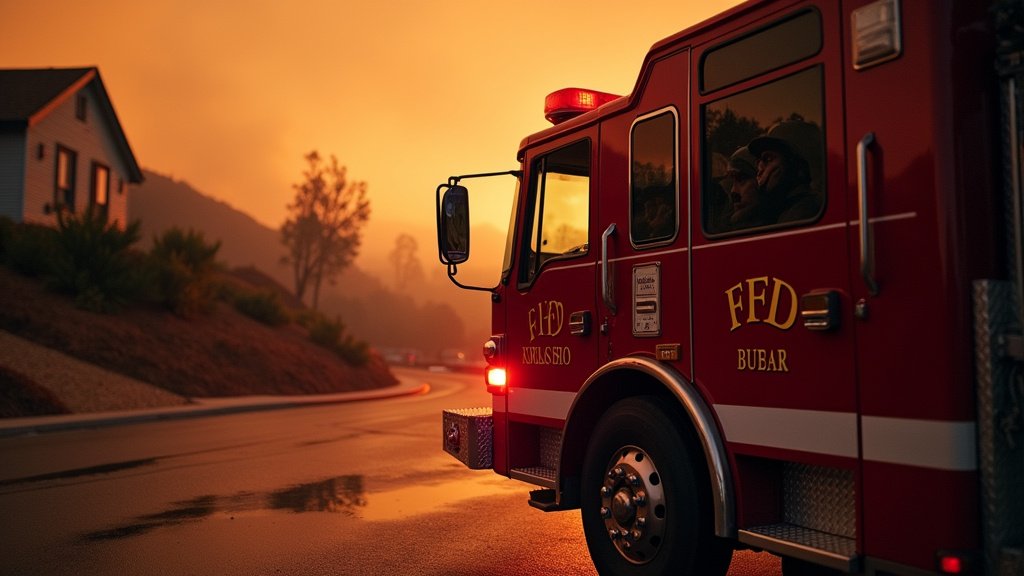In the wake of the devastating Palisades Fire that claimed 12 lives and destroyed thousands of homes, Los Angeles is implementing significant changes to its wildfire response protocols, including mandatory increased firefighter staffing during high-risk weather conditions. These measures come after a critical after-action report detailed systemic failures in the Los Angeles Fire Department’s (LAFD) initial response to the January 2025 inferno.
The Palisades Fire: A Devastating Inferno’s Toll
The Palisades Fire, one of the most destructive in the city’s history, erupted on January 7, 2025, exacerbated by extreme Santa Ana winds. The blaze tore through the popular Pacific Palisades neighborhood, leaving a path of destruction. Investigations later revealed the fire was likely a “holdover fire,” a reignition of a smaller blaze, the Lachman Fire, that had occurred on New Year’s Day. Federal prosecutors have since charged Jonathan Rinderknecht, who allegedly started the initial Jan. 1 fire, with destruction of property by means of fire.
Unveiling the Failures: LAFD’s After-Action Review
The LAFD’s comprehensive after-action report identified critical shortcomings that hampered the response. Among the key findings were a severe lack of pre-deployment of fire engines and personnel, despite clear warnings of dangerous fire weather. The process for recalling off-duty firefighters was found to be ineffective, leading to insufficient staffing in the crucial early hours. Some high-ranking officials reportedly lacked experience in managing fires of this magnitude. Furthermore, the report highlighted delays in issuing evacuation orders and issues with traffic control, alongside a failure to utilize thermal imaging technology to detect lingering underground embers from the initial Lachman Fire. Financial considerations were also cited as influencing staffing decisions, leading to firefighters working extended shifts without adequate rest.
Promises of Enhanced Preparedness: Increased Staffing and Resources
In response to these critical findings, Los Angeles Mayor Karen Bass announced a new mandatory protocol: firefighters will now remain on duty for an additional shift during Red Flag weather warnings. This aims to bolster resources significantly when the risk of wildfires is highest. The LAFD has committed to implementing leadership changes, strengthening interagency coordination, and enhancing pre-deployment strategies. A fundamental shift in policy means that “all staff will be immediately recalled and all available apparatus staffed, regardless of external factors or financial impact,” ensuring preparedness takes precedence over budget concerns in high-risk situations. The department has also acquired new thermal imaging cameras for all its apparatus, a technology that was notably absent during the mop-up of the initial Jan. 1 fire.
Legislative Reforms: Strengthening California’s Fire Response
Governor Gavin Newsom has signed a comprehensive package of bipartisan bills designed to aid in the recovery of communities impacted by the recent wildfires and to fortify California’s future disaster response. These legislative actions incorporate lessons learned from the devastating fires. The new laws aim to streamline the rebuilding process for homeowners and tenants, provide property tax relief to wildfire survivors, and establish programs to reduce the risk of catastrophic wildfires through initiatives like grants for fire-safe roofs and funding for vegetation clearing projects. The reforms also include measures to protect displaced residents and crack down on looting in evacuation zones.
Lessons Learned and the Path Forward
The Palisades Fire served as a stark reminder of the persistent threat of wildfires in Los Angeles and the need for robust preparedness. The critical analysis of the LAFD’s response, coupled with proactive policy changes and legislative action, represents a significant step towards building a more resilient system. The commitment to increased staffing during high-risk weather, improved communication, and enhanced resource allocation signals a dedication to preventing similar tragedies in the future. The ongoing news from Los Angeles highlights a community and its leaders striving to learn from past failures and forge a safer path forward.





